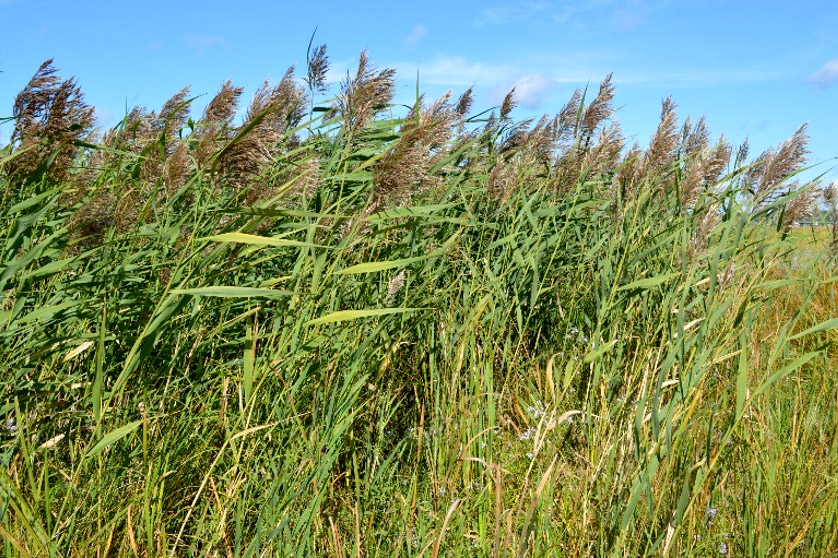Common Reed (Phragmites)

New Brunswick Invasive Species Council – Stand of phragmites in late summer.
Common reed (Phragmites australis) is a tall perennial grass found in fresh, brackish and saline wetlands throughout the US. waters and in the moist soils of tidal and nontidal wetlands.
Introduced in the early 19th century from Europe, phragmites has spread throughout both coastal and inland habitats. A native, though increasingly uncommon, variety (Phragmites australis ssp. Americanus) has been rapidly displaced through hybridization and competition.
The plant has extensive network of roots and rhizomes which can extend downward several feet, and horizontally via rhizome runners up to 10’. It is estimated that a large percentage of phragmites’ biomass is located underground. Spread is via seeds and movement of rhizome fragments. In the late summer, tasseling phragmites is readily noticed along and within wetland areas.
Monocultures of phragmites create dense, impenetrable stands that do provide some habitat for birds and mammals but displace native wetland species that provide habitat more suitable to a wider range of creatures.




Photo: Joan Deely – Shoots arise from each node of the stolon.

Photo: Joan Deely – Phragmites can rapidly recolonize disturbed areas.
Swallowwort
Olive
Mustard
Stiltgrass
